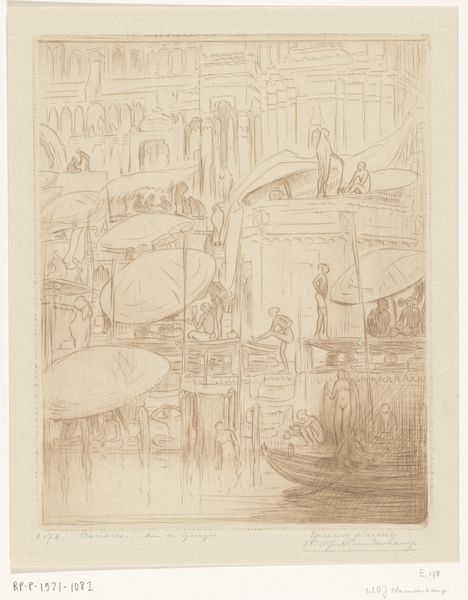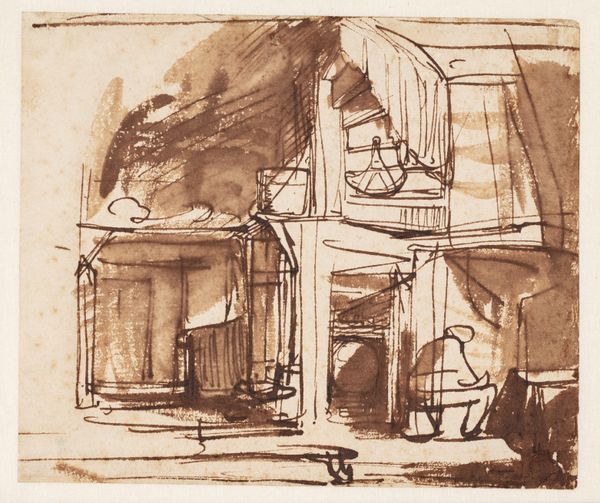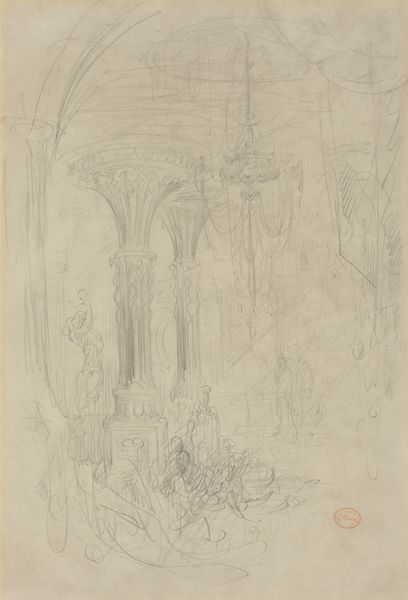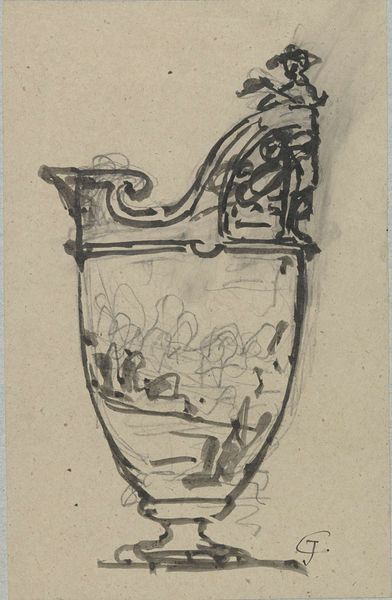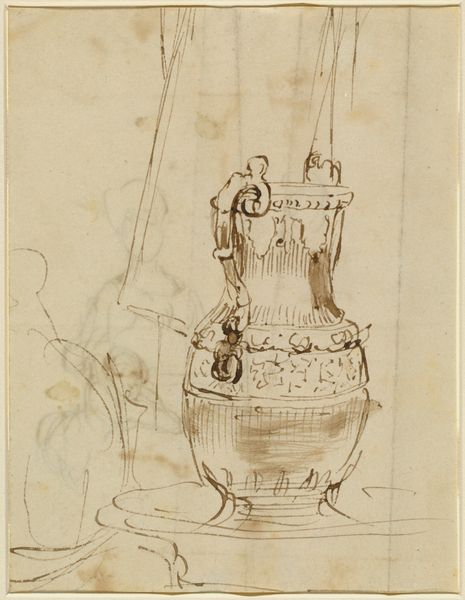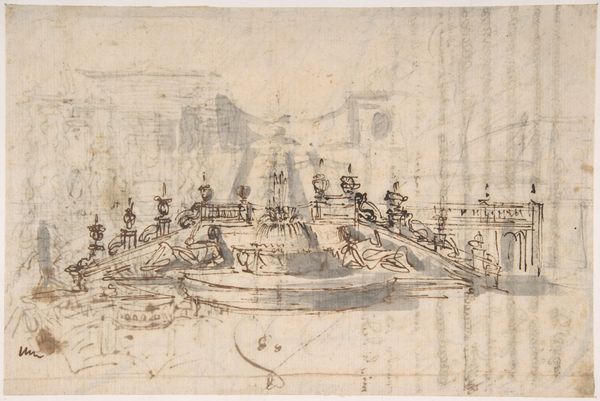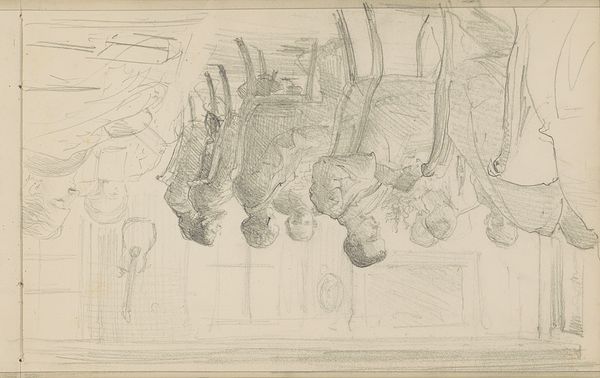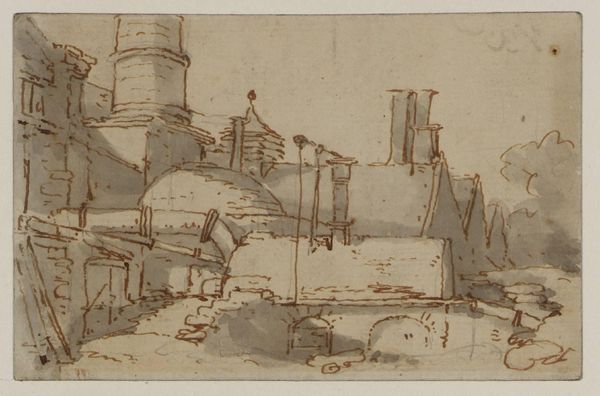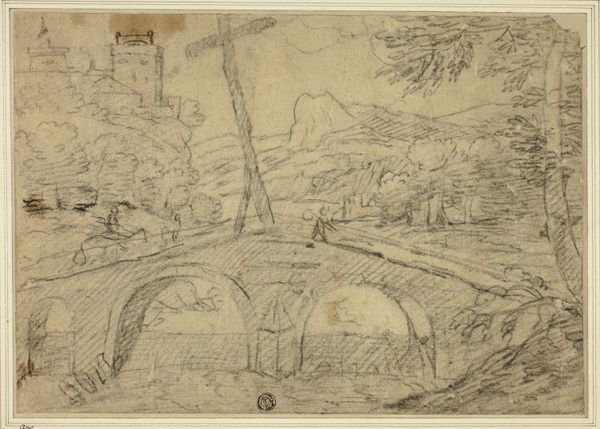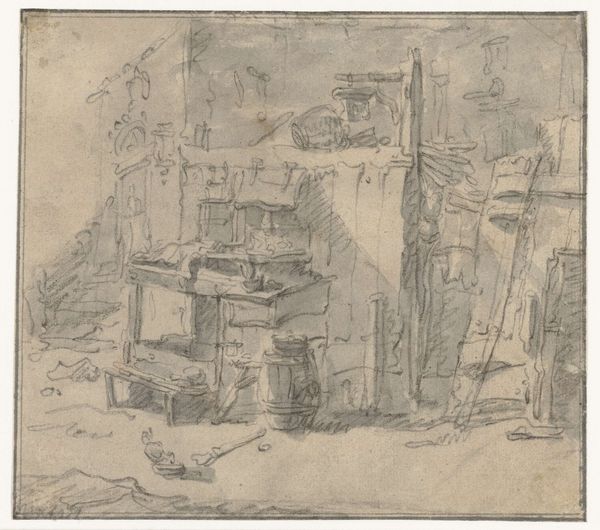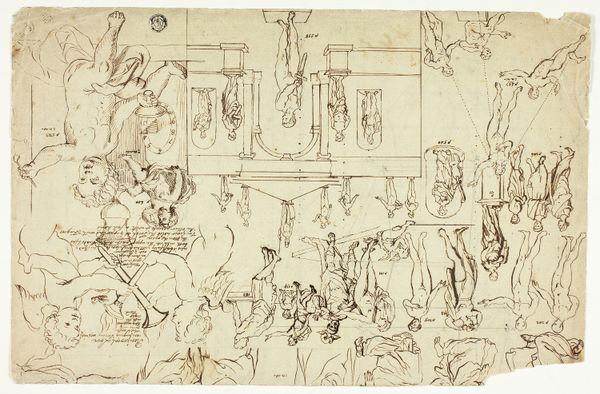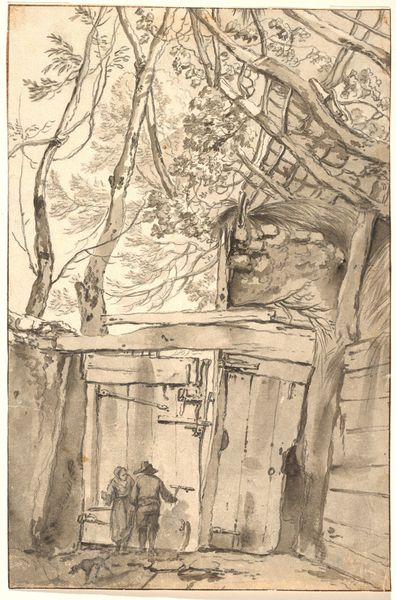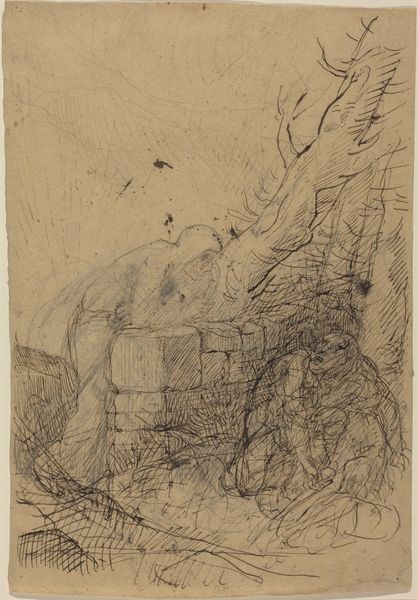![Designs for Vases [verso] by Giuseppe Cades](/_next/image?url=https%3A%2F%2Fd2w8kbdekdi1gv.cloudfront.net%2FeyJidWNrZXQiOiAiYXJ0ZXJhLWltYWdlcy1idWNrZXQiLCAia2V5IjogImFydHdvcmtzLzBmNTYxYTk3LTQwODgtNDJhMS1iODJhLTkxN2Y2MGE3YzE4OS8wZjU2MWE5Ny00MDg4LTQyYTEtYjgyYS05MTdmNjBhN2MxODlfZnVsbC5qcGciLCAiZWRpdHMiOiB7InJlc2l6ZSI6IHsid2lkdGgiOiAxOTIwLCAiaGVpZ2h0IjogMTkyMCwgImZpdCI6ICJpbnNpZGUifX19&w=3840&q=75)
drawing, paper, ink
#
drawing
#
paper
#
form
#
ink
#
line
#
italian-renaissance
Dimensions: overall: 17.9 x 25.9 cm (7 1/16 x 10 3/16 in.)
Copyright: National Gallery of Art: CC0 1.0
Editor: Here we have "Designs for Vases" by Giuseppe Cades, it's an ink drawing on paper. It feels almost frantic, like a fleeting thought captured quickly. How do you interpret this work, given that it's a preparatory drawing and the date is unknown? Curator: I see a direct connection to the sociopolitical landscape of Cades' time. Think of the 18th century: revolution, shifting power, the rise of Neoclassicism as a visual language of "reason." This drawing isn't just about vases; it’s about the very structures—both aesthetic and societal—being questioned and re-imagined. The dynamism you noted isn't just stylistic, it is symbolic of the intellectual ferment of the time. Do you see any elements that might suggest the influence of earlier, even ancient, systems of power and hierarchy? Editor: Now that you mention it, the vases definitely recall classical forms, almost Roman or Greek in style. But then the sketchy lines disrupt that sense of order, don’t they? Curator: Exactly! The line work, almost like palimpsests of ideas, pushes against a static vision of the past. It implies Cades isn't merely replicating classical ideals, but actively engaging with and transforming them. Perhaps deconstructing established notions of beauty and function by layering them into complex webs, similar to how intellectual debates were occurring in salons at the time. What statement do you think Cades might have been trying to make through that deliberate disruption of artistic rules? Editor: I guess I hadn't considered that the sketchiness was a deliberate artistic choice carrying cultural meaning. Seeing it as part of that historical context really changes how I view the artwork. Curator: Indeed, viewing art as an active participant within its specific era allows us to connect on a much deeper level. Each object conveys something regarding power and privilege. What at first glance may be simple formalism evolves into something deeply meaningful once these artistic and historical perspectives are considered.
Comments
No comments
Be the first to comment and join the conversation on the ultimate creative platform.

